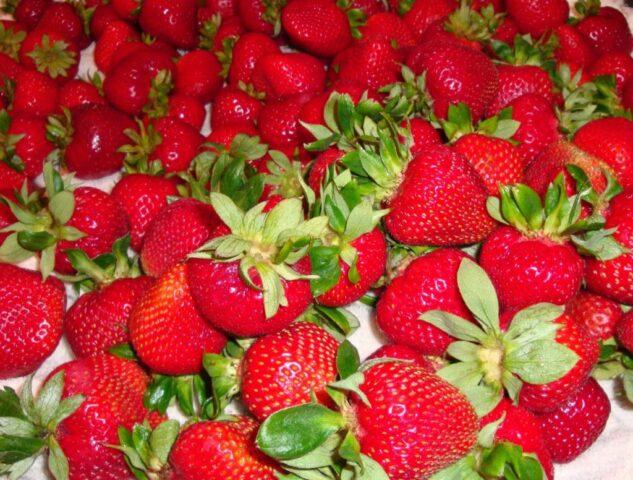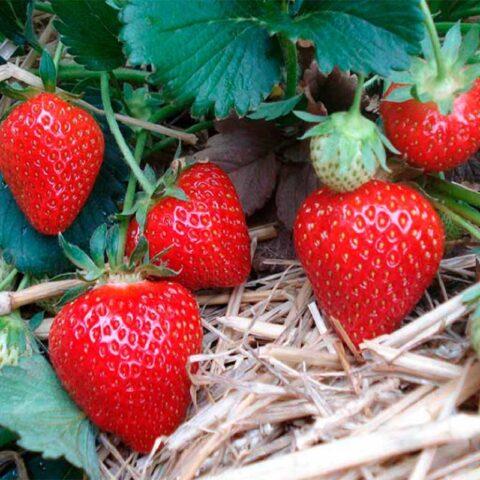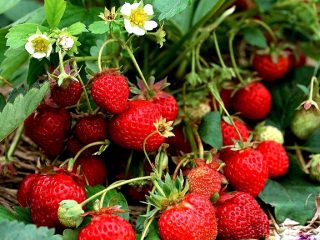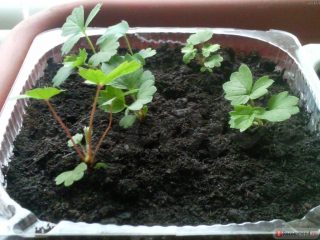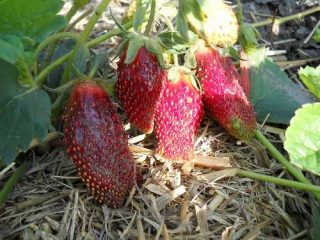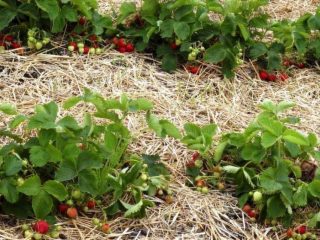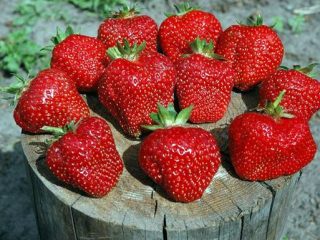Content
- 1 What does gray rot look like on strawberries?
- 2 Causes of gray rot on strawberries
- 3 How to treat strawberries against gray rot during fruiting, after harvesting in the fall
- 4 How to protect strawberries from gray rot
- 5 Strawberry varieties resistant to gray rot
- 6 Conclusion
Often the cause of the loss of a significant part of the crop is gray rot on strawberries. Its causative agent can be located in the soil and, under favorable conditions, begins rapid development. To prevent fungal damage to plants, you need to know not only the rules for combating it, but also preventive measures.
What does gray rot look like on strawberries?
Signs of gray rot on strawberries are easy to notice. Initially, rapidly growing brown spots appear on the leaves, stalks, buds, ovaries, and berries of the affected plants. They are then covered with spores that form a gray coating.The leaves turn yellow, the fruits become watery, gradually dry out and turn into dark, hard lumps.
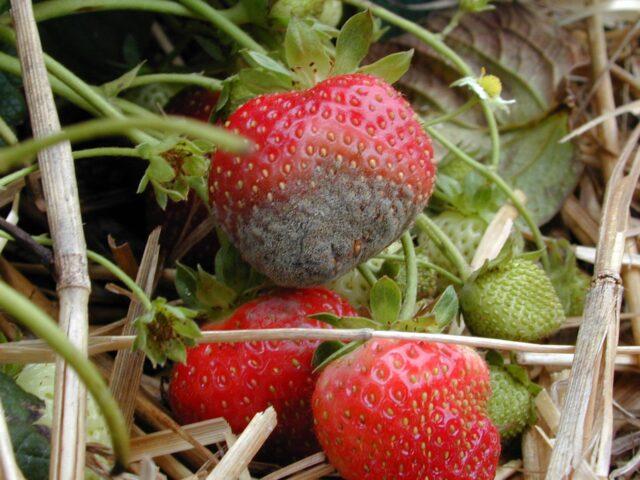
In one season, gray mold carries out up to 12 reproductive cycles
Causes of gray rot on strawberries
The causative agent of gray rot on strawberries is the mold fungus Botrytis cinerea (gray botrytis). It overwinters well in plant debris and soil, after which it forms spores that are easily carried by wind and moisture.
The main reasons for its development include:
- High air humidity.
- Excessive watering or prolonged rainfall.
- Low air and soil temperatures.
- Thickening of plantings.
- Lack of proper ventilation of bushes.
- Direct contact of berries with soil.
How to treat strawberries against gray rot during fruiting, after harvesting in the fall
The disease develops quickly and it is unsafe to fight it during the fruiting period using chemicals. At this time, you can only stop the spread of infection by manually collecting damaged parts of strawberries or traditional processing methods, which are considered more gentle and harmless. In the fall, after harvesting, the bushes are sprayed with strong chemicals that are guaranteed to get rid of fungal diseases.
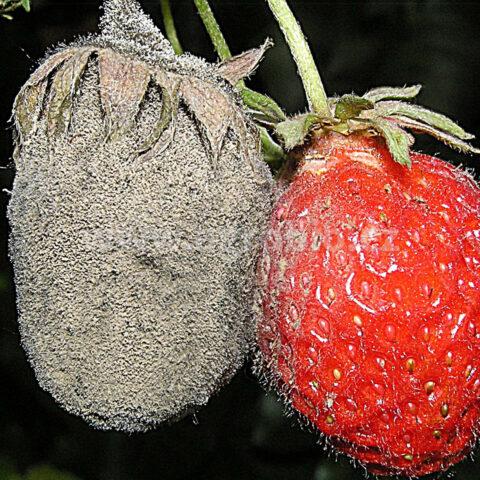
Berries infect each other very quickly
Preparations against gray rot on strawberries
Preparations used to treat plants against gray rot are divided into chemical and biological. The former can only be used before flowering and after harvesting, since the recommended waiting period for them is about thirty days.
Biological preparations penetrate inside plants and help increase their immunity and produce substances that prevent infection by fungi. The waiting period for them is up to five days.
In order for the use of products against gray rot on strawberries to be effective, a number of requirements for the procedure must be met:
- Spray plants only in the evening, morning or during the day in cloudy weather.
- In rainy weather, they are carried out more often (every 5-14 days).
- For a one-time procedure, only one fungicide is used.
Copper sulfate for gray rot on strawberries
Copper sulfate is used to destroy gray rot before the start of the strawberry growing season. When a rosette of new leaves has not yet appeared above the soil surface, it is sprayed with a solution of the drug. To do this, dilute 5 g (one teaspoon) of copper sulfate in 10 liters of water.
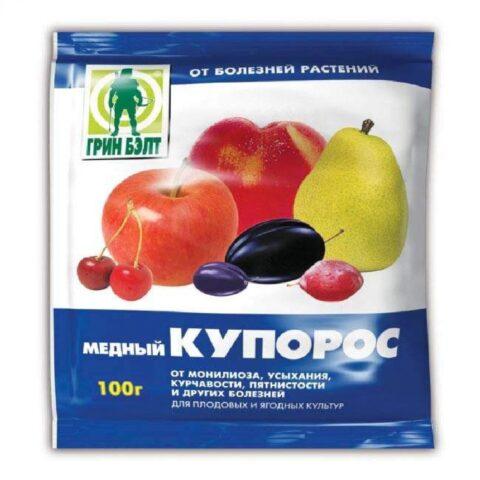
In autumn, copper sulfate is used as microfertilizer
Trichopolum from gray rot on strawberries
Trichopolum, or Metronidazole (Trichopol, Metronidazolum) is a reliable and inexpensive remedy. It is intended to combat human bacterial infections. Gardeners use it to treat strawberries from gray rot - dilute ten to twenty tablets in 10 liters of water and spray the plants. Treatment must be carried out after every rain. To enhance the bactericidal effect, add a bottle of brilliant green (10 ml) to the solution.
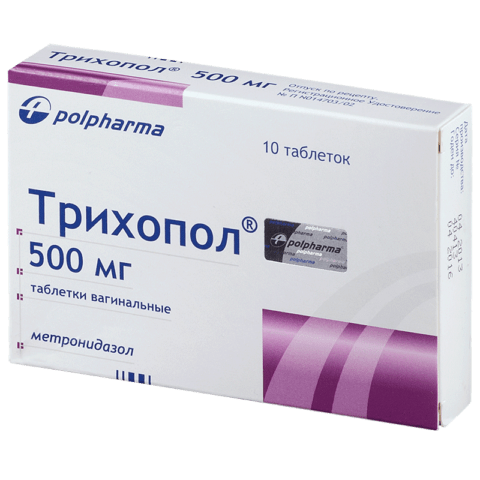
Metronidazole is cheaper than Trichopolum
Horus
Modern pesticides are aimed at combating fungal diseases. The active substance inhibits the biosynthesis of amino acids, which leads to disruption of the life cycle of pathogens during the growth of the mycelium. Strawberries are treated with Horus no more than two or three times per season - at the beginning of the growing season and three weeks before harvesting.To obtain a working fluid, 3 g of granules are dissolved in 10 liters of water.
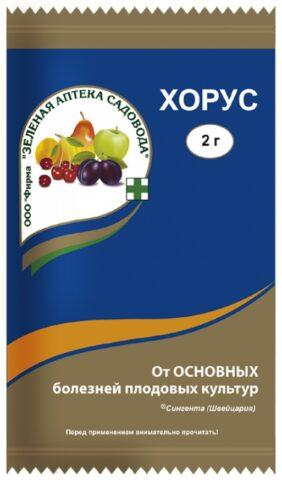
After spraying, part of the drug remains in the upper layer of plant tissue
Teldor
A few hours after treatment with the drug, a moisture-resistant film forms on the foliage, preventing pathogens from penetrating inside the plants. The difference between Teldor is that it contains fenhexamide, which has a systemically localized effect.
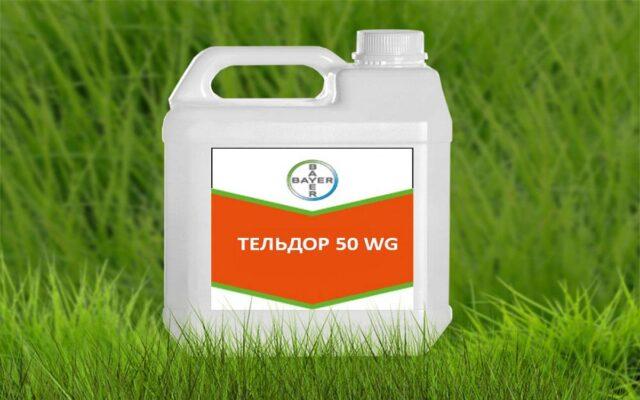
The work is carried out on a clear day, with little or no wind
Fitosporin-M
A natural biofungicide containing live spores of Bacillus subtilis. Hazard class – fourth. Strawberries are sprayed against gray rot during the phase of extension of peduncles, opening of buds and the beginning of ripening of berries. Working fluid consumption is 6 liters per hundred square meters.
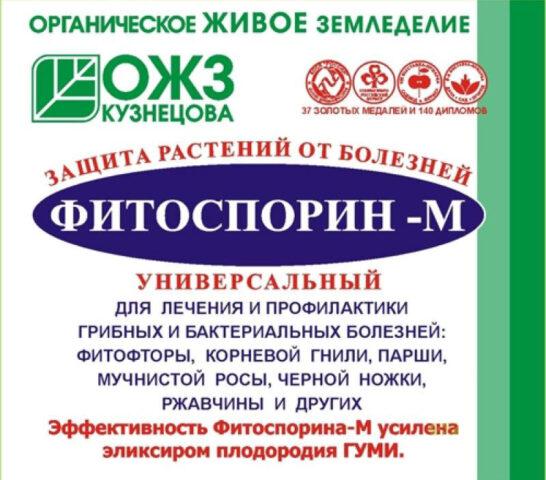
Fitosporin – gray or white powder
Alirin
The drug is not only able to fight gray rot on strawberries, but also restores the soil microflora. The biological agent acts immediately after treatment and lasts about two weeks. It is used both for spraying and watering at the root. The consumption rate is six to ten tablets per 10 liters of water.
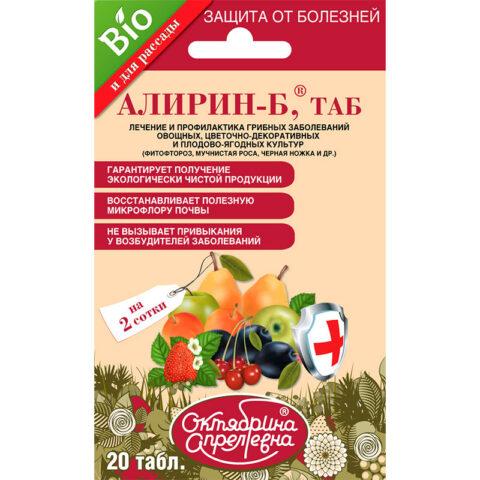
Alirin is incompatible with antibiotics and bactericidal agents
Chistoflor
The biological preparation is effective in the fight against gray rot and powdery mildew. You can spray both before flowering and after harvesting. The waiting period is twenty days, two treatments are required.
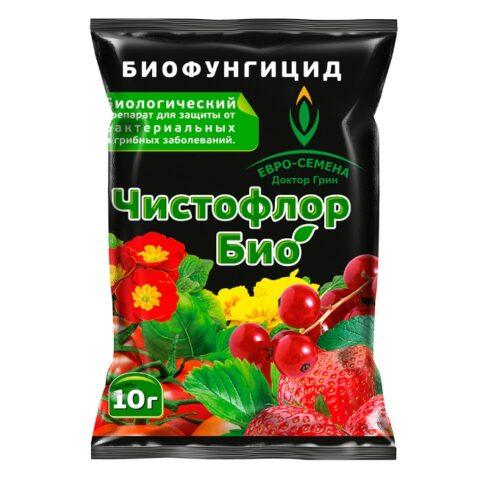
The use of Chistoflor may have a stimulating effect on plants
Traditional methods of combating gray mold on strawberries
To get rid of rot, you can use time-tested folk remedies. They are safe for people, insects and the environment.
Yeast from gray rot on strawberries
Yeast solution not only helps protect berries from gray rot, but also increases soil fertility and improves its structure. To prepare it, 1 kg of pressed yeast is diluted in warm water (5 l), and immediately before watering the strawberries it is diluted 10 times.
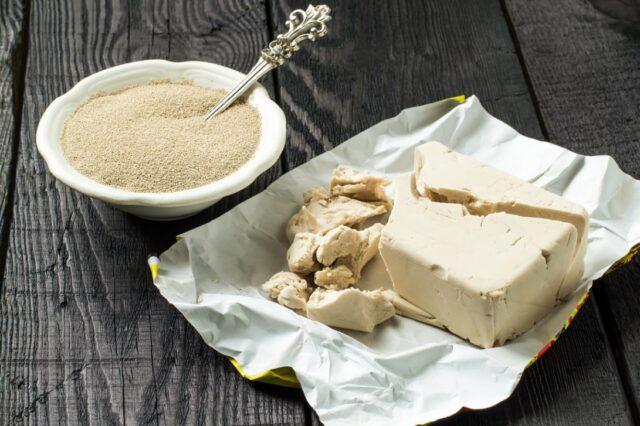
To replenish potassium in the soil, ordinary ash is added to the yeast.
Soda for gray rot of strawberries
When brown spots appear on strawberries, they are treated with a soda solution several times with a break between procedures of a week. To prepare a solution, add 40 g of baking soda to 10 liters of settled water.
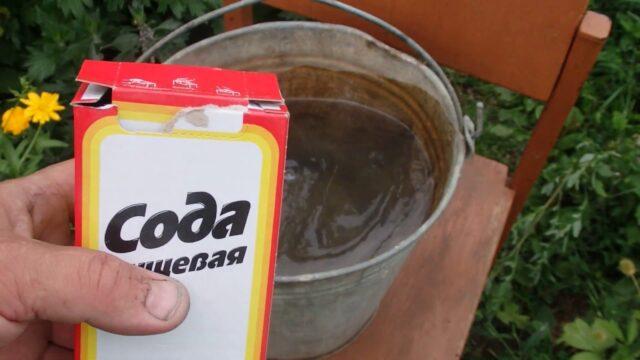
Add 2-3 tablespoons of liquid soap to the water along with baking soda.
A mixture of soda, garlic, soap
A mixture of 100 g of crushed garlic, 35 g of soda, 70 g of mustard powder, 15 g of tar soap, one tablespoon of pine needle extract and 8 liters of warm water has a greater effect. The processing is carried out at the stage when the berries are still green.
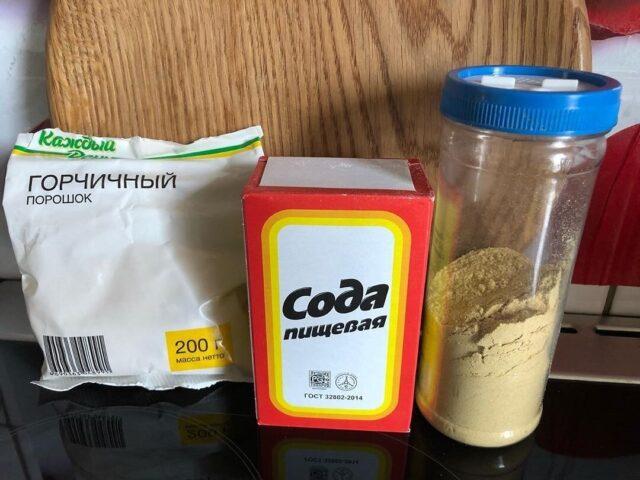
Mustard improves soil composition
Iodine
An iodine-based solution is used in the spring, before flowering. The frequency of procedures is three times before the ovaries appear. To prepare the liquid, mix fifteen drops of iodine, one glass of whey and 10 liters of warm water.
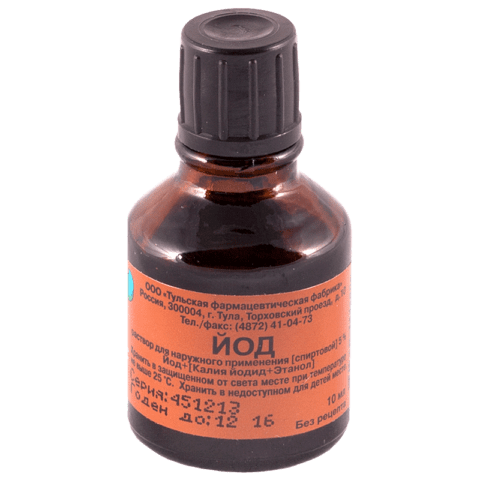
Iodine can destroy fungi and other protozoan microorganisms
Potassium permangantsovka
To prevent infection and repel pests, a solution of potassium permanganate with the addition of a few drops of boric acid is often used. The water should be hot (50 ⁰C), and the color of the liquid should be bright pink.
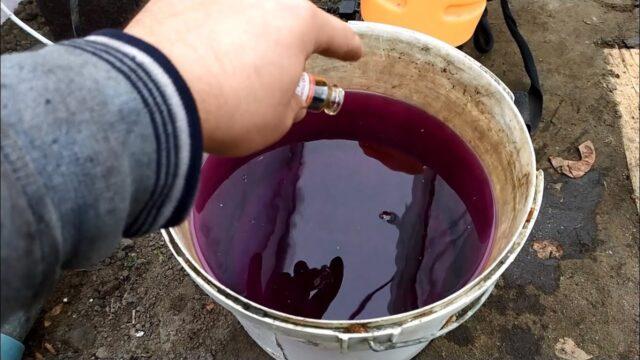
The solution must be mixed very thoroughly
How to protect strawberries from gray rot
In combination with treatments, it is necessary to use preventive measures to minimize the possibility of gray rot developing.Among them:
- Planting a strawberry plantation only on loose soil.
- Selecting a well-lit area for planting.
- Timely thinning of plants.
- Humidity control.
- Use mulch to prevent contact with the ground.
- Regular weeding.
- Removing diseased and affected berries.
Strawberry varieties resistant to gray rot
There is another way to avoid fungal infections. The photo shows strawberry varieties resistant to gray rot. When growing them, the risk of fungal infection is significantly reduced:
- Early varieties (Alba, Honey, Honey, Clery, Elvira).
- Medium early ripening (Korona, Tago, Slavutich).
- Late (Symphony, Mitze Schindler).
Conclusion
Gray rot on strawberries is very common. To combat it, you can use any of the methods or several in combination. The use of prevention methods and timely response to the appearance of fungus will definitely give a positive result.

